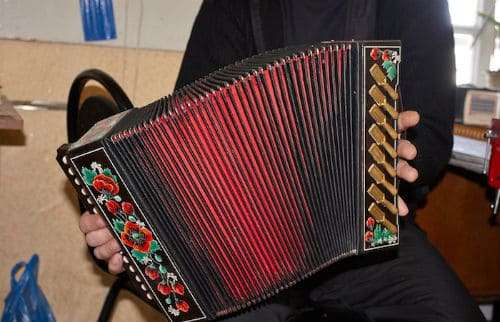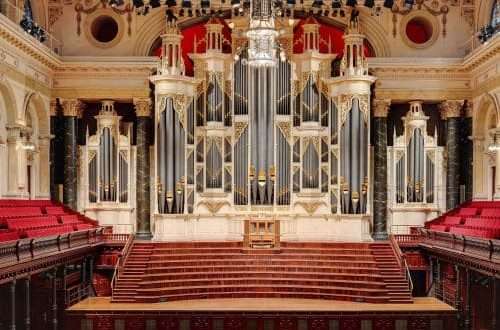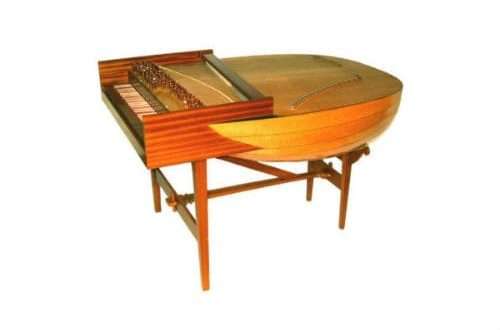
Livenskaya accordion: composition, history, sound, use
Contents
The harmonica appeared in Russia in the 1830th century. It was brought in by German musicians in the XNUMXs. Masters from the city of Livny, Oryol province, fell in love with this musical instrument, but were not satisfied with its monophonic sound. After a series of reconstructions, it became a “pearl” among the Russian harmonicas, was reflected in the works of the great Russian writers and poets Yesenin, Leskov, Bunin, Paustovsky.
Устройство
The main feature of the Liven accordion is a large number of borins. They can be from 25 to 40, while other varieties have no more than 16 folds. When stretching the bellows, the length of the tool is 2 meters, but the volume of the air chamber is small, which is why it took an increase in the number of borins.
The design does not have shoulder straps. The musician holds it by inserting the thumb of his right hand into the loop on the back wall of the keyboard neck, and passes his left hand through the strap on the end of the left cover. In one row of the right keyboard, the device has 12-18 buttons, and on the left side there are levers that, when pressed, open external valves.

During the years of the creation of the Liven harmonica, its uniqueness was that the sound did not depend on the stretching of the fur in a certain direction. In fact, masters from the city of Livny created an original instrument that has no analogues in other countries.
History
At the end of the XNUMXth century, the harmonica was the exclusive calling card of the Oryol province. Small in size with long fur, decorated with ornaments, it quickly became recognizable.
The tool was made only in a handicraft way and was a “piece goods”. Several craftsmen worked on the same design at once. Some made cases and bellows, others made valves and straps. Then the master staplers bought up the components and assembled the harmonica. The shower was expensive. At that time, its value was equal to the price of a cow.

Before the revolution of 1917, the instrument became incredibly popular; people from different volosts came to the Oryol province for it. The handicraftsmen did not keep up with the demand, the factories of the Oryol, Tula provinces, Petrograd and other cities were included in the production of the Liven accordion. The price of a factory harmonica has decreased tenfold.
With the advent of more progressive instruments, the popularity of the livenka gradually faded away, the masters stopped passing on their skills to the younger generation, and in the middle of the last century, only one person remained in Livny who collected this accordion.
Valentin, one of the descendants of the Livensky handicraftsman Ivan Zanin, took up the renewal of interest in the instrument. He collected old songs, stories, folklore from the villages, searched for preserved copies of original instruments. Valentin also created an ensemble that gave concerts throughout the country, performing on radio and television.

Sound sequence
Initially, the device was single-voiced, later two- and three-voice harmonicas appeared. The scale is not natural, but mixed, fixed in the keyboard of the right hand. The range depends on the number of buttons:
- 12-buttons are tuned in the range from “re” of the first to “la” octaves;
- 14-button – in the “re” system of the first and “do” of the third;
- 15-button – from “la” small to “la” of the second octave.
The people fell in love with the livenka for its unique sound, characteristic of Russian melodious overflows. In basses, it sounded like pipes and horns. Livenka accompanied ordinary people in troubles and joys, weddings, funerals, seeing off to the army, folk holidays and festivities could not do without her.





